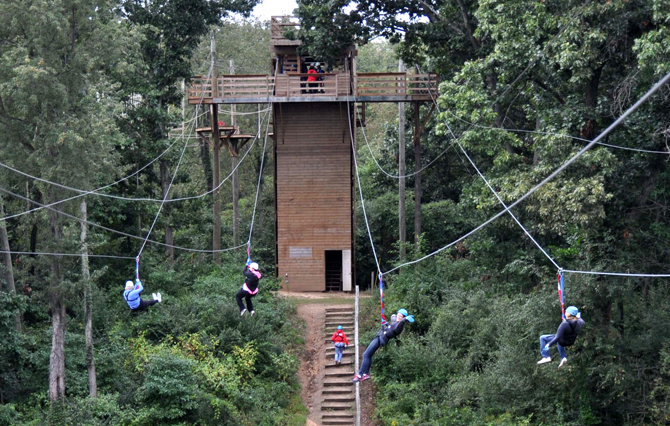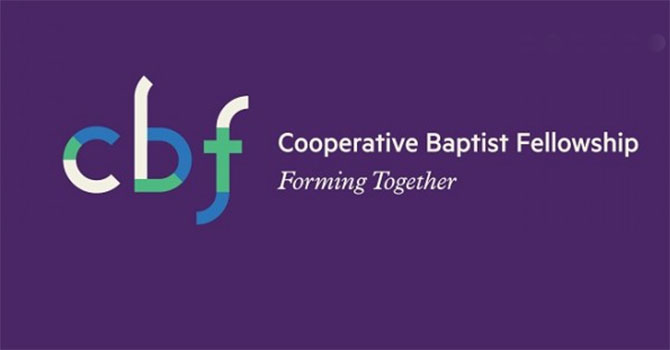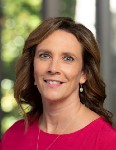Editor's note: This interview is part of a series on leadership development.
 Suzii Paynter stepped into the role of executive coordinator of the Cooperative Baptist Fellowship (CBF) at a time when the organization was making dramatic systemic changes.
Suzii Paynter stepped into the role of executive coordinator of the Cooperative Baptist Fellowship (CBF) at a time when the organization was making dramatic systemic changes.
Soon after her arrival, CBF adopted a new governance structure and strategic plan to guide the global nonprofit organization, which comprises 1,800 churches and more than 130 missionaries.
With those changes came shifts in leadership development, as Paynter expanded the leadership team and began to map the organization’s staff structure and performance evaluation to the new plan.
Guiding and nurturing young people in leadership is a particular focus of Paynter’s work.
“It’s a big commitment of my time to create a strong, broadly based leadership team,” she said. “We have a lot of young leadership in our ranks. … This is our future, this large number of leaders that we want to keep and sustain.”
Paynter spoke to Faith & Leadership about leadership development of the CBF staff, including the unique opportunities offered by her “denomi-network.” The following is an edited transcript.
Q: How has your staff changed since you’ve been in this position?
When I came, there were three direct reports to this position, so I’ve expanded that structure [to currently 10]. I’ve flattened the organization, taken out some of the folks in between, and I’ve done that in order to create a broadly based, younger leadership team in the organization.
Q: When you came into this position a year and a half ago, how did you assess what needed to be done in terms of leadership development?
One of the things that was driving us is that we had a new strategic plan. And so I mapped our staff structure and the incentives -- both intended and unintended -- that came from that staff structure to this new strategic plan.
Q: When you began to think about leadership development, how did you set overall goals for the organization, as well as individual goals for people within it?
One step was assessing our assets. One of the assets that I saw was a tremendous number of young leaders in our community. Unlike some other denominational groups that do not have a large number of younger clergy, because of our relationship with 15 seminaries and divinity schools, we have a lot of young leadership in our ranks, in our churches.
When I came, we had 255 active résumés; that let me know there were a lot of people on the move out there, most of them in their early or mid-career. So I said, “This is our future, this large number of leaders that we want to keep and sustain.”
That helped me make a decision about leadership development on my own staff. First of all, I wanted to draw from that same pool of people. How do I make natural connections to that network that are reflected here at the national and global office?
I believe that your leaders in your congregation are going to look to your office here and ask themselves the question, “Do I see people that look like me, that went to seminary with me, that care about the things I care about?” They want to see a reflection of themselves in the leadership of our denomination.
Q: So you wanted to get younger folks in leadership in the denominational office as a reflection of what was already happening on the ground, so to speak?
Right. There were terrific younger employees with a lot of very good service on the staff among the people that were employed when I came. So one of my strategies was to assess their performance and strengths and ask myself the question, “In the changing of these new job descriptions, how do I give these folks that do have connections, that do look a lot like our constituency, how do I give them new responsibilities that match the strategic plan, and then how do I prepare them to carry out those responsibilities effectively?”
Q: So on the second point, what processes have you developed to help them carry out those responsibilities?
Regular communication is really important, and what that means for us is as a group we meet every other week as a leadership team, and I have 30-minute one-on-one meetings with every one of them once a month, so that we have standard discussion times. We build those agendas cooperatively.
And then certain members of my staff I sent to the Leadership Education workshop; I sent four of them together. I knew that they were going to be working as a team, working from new positions, and I wanted them to go together to a common professional development training so that they had common language and common tools that were interdisciplinary. That’s another really important piece for me.
We’ve done some work understanding ourselves as individuals. We’ve had one Enneagram workshop, and we’ll probably have another one, with not just the folks on the leadership team but across the whole staff.
Q: And is that more about assessing who you are as a leader, and less about skills?
I think it’s important to do both of those things. The other aspect is we’ve had a theologian-in-residence this year, too, so having a monthly conversation around theology, around biblical interpretation.
All of those conversations -- the personal conversation, the skills conversation, the theological conversation -- I think part of my responsibility in leadership development is providing the context for meaningful conversations in these big areas that shape and form us as an organization.
Q: Why do you use the Enneagram?
Because it has both a spiritual component and a personality component, and because you self-define. In other words, you’re not being handed back a questionnaire that tells you who you are; you’re listening and deciding. And to me, that is a very important function of ownership when you’re talking about information about yourself.
Q: How do you know people are making progress on their goals?
Having these monthly meetings really does give us the opportunity to check in on goal setting and have a pretty honest conversation about what’s happening.
I’m a very big fan of having a good structured performance review; I think it’s a good discipline. But it also can be kind of a deferred process, you know -- you can wait too long to address something if you’re just waiting for the formal performance review.
With a new strategic plan and with new people in positions of leadership, you need a more consistent review of goals that is informal, where there’s more give-and-take and discussion about it; you don’t feel like your whole job is riding on it or something is going to be dropped in your personnel file.
Q: And do you also do the structured annual review?
Yeah. And we’re right in that process right this minute.
Q: What’s your process for setting individual and group goals?
Because we have this new strategic plan, we’ve really tried to tailor our goals back to that and use that as a touch point. We ask the question, “Looking at this strategic plan, where do you see your division or your work? What goals can you contribute, and where do they plug in?”
The question is not just, “What do you wake up every day and love to do, and how do we make that your goal?” That’s not the point. The point is to really move toward the outcomes that are envisioned in our strategic plan.
One of those big outcomes is greater collaboration. I’m asking all my direct reports to have a collaboration goal or goals. Then we can ask the question, “What is it within your work that is going to show benchmarks toward collaboration? What would that look like next year if you’re more collaborative?”
So that’s been the process, of using this strategic plan as our guiding light, and then in setting goals with each person, really looking at two or three aspects.
No. 1, the actual content in programs that they supervise, because everybody that’s my direct report is going to have multiple programs under them.
And secondly, the management aspect of their jobs -- the people that report to them, the budget and finance responsibilities that they have, the HR and personnel policies, you know, all of the managerial aspects -- pay attention to that and let them know that I think that’s important.
So it’s not just important that they go out and have a great conference somewhere but also that the people that were doing the catering and were setting things up and printing the materials for it also had a great experience. So that the staff that reports to you is not sacrificing for you to have a great event but they’re just as fulfilled by your event as you are because of the way in which you’re working with them.
And the third thing is external relationships. Who are they interfacing with? It might be church engagement, global field personnel, ecumenical relationships, interfaith relationships, pastors or youth ministers -- they have some goal that is about those external relationships.
I try to structure their goals so that they represent growth and development and achievement in all three of those areas.
One thing I also believe in is when you give a person responsibility, you also give them budget money to live that out. And so I think it’s very important, as you give people responsibility, to give them the opportunity to spend money and plan for the expenditure of money and report on the expenditure of money toward the goals that they set.
Q: Are there any particular issues in bringing along and developing younger leaders?
I don’t really want to generalize by age too much. One of the things I am very interested in is maintaining the idea that all of us are in different life stages and that, as a staff, a part of developing leadership is helping people embrace and love the time of life that they’re in.
Right now I have several staff members that have preschool children or newborn children, and I want to be clear with them that I understand what time of life they’re in, what that means in terms of demands or time structure.
I want them to come to work as the mother of a 2-year-old or the father of a newborn. I want them to come to work as that person, and not have that be something where they feel like they have to juggle their life on the side and then rush in here and pretend they’re somebody else.
Q: What was your own development as a leader? What experiences are you drawing from, now that you are in a position of guiding other people in their development?
One thing is that I was given responsibility, and was expected to show performance indicators for that responsibility, when I was teaching at Stephen F. Austin University in Nacogdoches. I was a graduate student, but I was also an employee, and I was given responsibility for a study-skills program for students.
I was expected to show indicators and benchmarks for that program and manage the schedule and things like that, so I had the expectation that if you’re given the responsibility, you’re also expected to show results, and that those things go together.
Q: Did you have a mentor?
I had a wonderful mentor, Dr. Beverly Young. She helped me become involved in professional associations. She said, “Go ahead, volunteer to be the treasurer! Nobody ever wants to be the treasurer or the secretary or whatever -- just volunteer for that job, and you’ll have an opportunity for leadership.” And she was right about that.
That was very formative for me. Professional organizations, as volunteer organizations, allow you a lot of latitude for expressing leadership gifts. And it was still a pioneer era for women in leadership. Becoming an officer of that professional organization gave me standing that I would never have gotten.
It gave me an opportunity to do a lot of public speaking, to interface with a lot of other leaders, to then connect to global organizations. So that’s one of the reasons that today I’m heading up a nonprofit volunteer organization.
There are a lot of people involved in the Cooperative Baptist Fellowship [for whom] this is a place to express their leadership. Whether they’re on an advisory council or leading a church engagement network for global missions or teaching in a pastor school in Romania or in China, they’re expressing tremendous leadership skills through a nonprofit network.
Q: So that’s how you developed as a leader, and you see yourself as providing similar kinds of opportunities.
Right. That’s really a beautiful gateway, to me, when I look at this organization and take note of the assets that are spread throughout our community -- these wonderful, talented people. How can I help open the doors for them to go share their gifts?
















